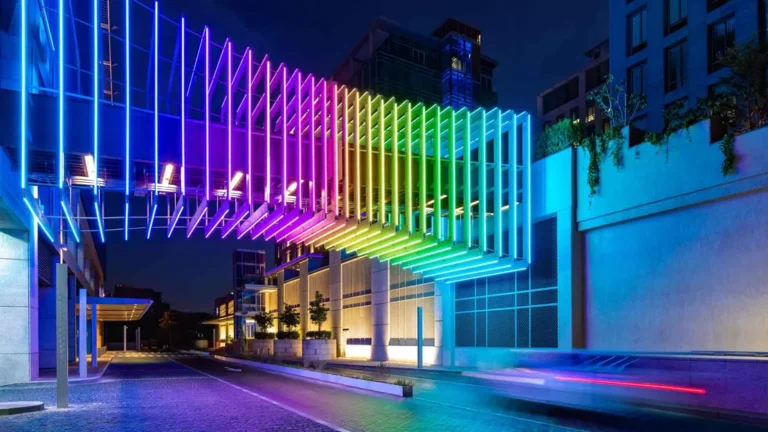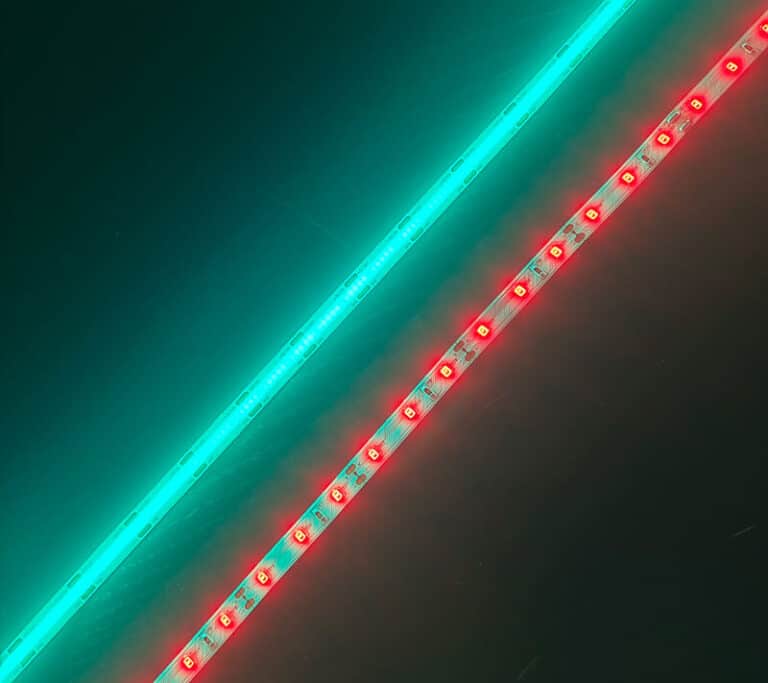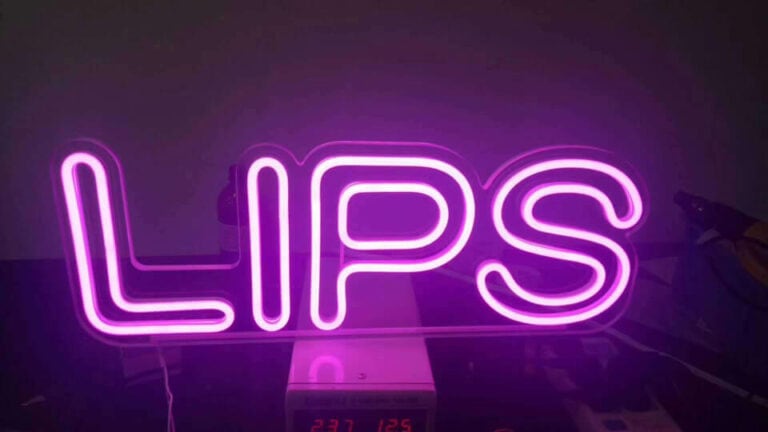En las oficinas modernas, la iluminación va más allá de la iluminación: da forma a cómo las personas trabajan y se sienten. Las luces lineales LED se han convertido en el estándar por su diseño limpio, incluso la distribución de la luz y la versatilidad en todos los espacios de trabajo. Cuando se combinan con sistemas de control DALI, ofrecen atenuación inteligente, ahorro de energía y gestión de iluminación centralizada. Este artículo explora cómo la iluminación lineal LED controlada por DALI brinda rendimiento e inteligencia a los entornos de oficina de hoy.
Por qué las luces lineales LED son la opción preferida para la iluminación de oficina
1. Formularios flexibles para el diseño de oficinas moderno
A diferencia de los accesorios de techo tradicionales, Luces lineales LED Ofrece una notable flexibilidad en forma y forma. Mientras que el perfil largo clásico y rectangular sigue siendo popular, los sistemas lineales también pueden ser curvos, circulares o configurados en patrones geométricos: zigzags, cuadrículas o formas arquitectónicas personalizadas. Esta adaptabilidad del diseño permite que la iluminación complemente el diseño interior en lugar de interrumpirlo, lo que la convierte en una parte perfecta de la estética moderna de la oficina. Ya sea instalado a lo largo de los pasillos o integrados en las características del techo, las luces lineales contribuyen a una apariencia limpia y contemporánea que atrae tanto a arquitectos como a diseñadores.
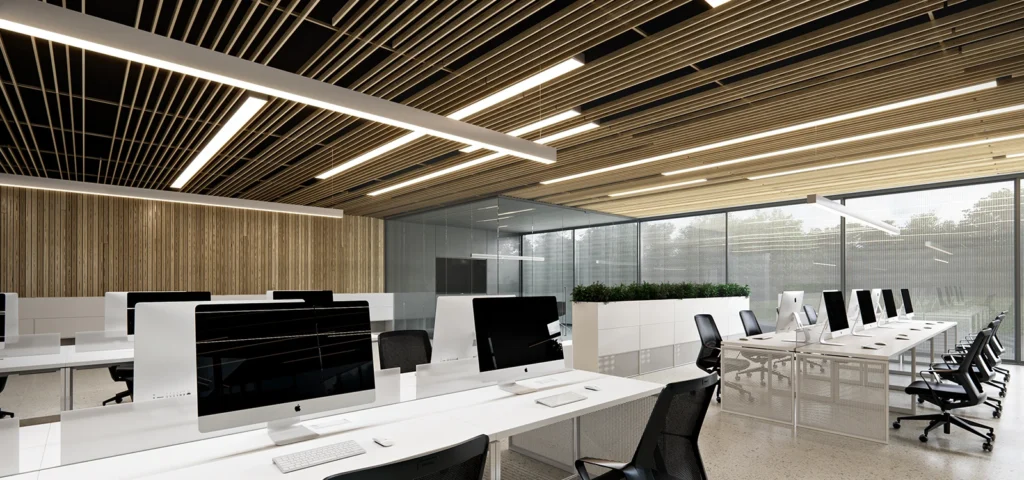
2. Iluminación uniforme con comodidad y eficiencia de los ojos
En los entornos de oficina, la comodidad visual es fundamental. Las luces lineales LED brindan una iluminación uniforme y distribuida uniformemente con un mínimo deslumbramiento, lo que reduce la tensión ocular durante el trabajo prolongado de la computadora. Muchos accesorios están diseñados con ópticas de baja UGR (Clasificación unificada), lo que los hace especialmente adecuados para espacios de trabajo de planta abierta y salas de reuniones. Al mismo tiempo, las luces lineales suelen ofrecer una alta eficacia luminosa, lo que significa más salida de luz con menos energía consumida. Esta combinación de bajo deslumbramiento y alta eficiencia apoya tanto el bienestar de los empleados como el ahorro de energía a largo plazo.
3. Opciones de montaje versátiles
Una de las razones por las que la iluminación lineal se ha convertido en una de las favoritas entre ingenieros y contratistas es su versátil instalación. Dependiendo de la estructura del techo y la intención del diseño, estas luces pueden ser suspendidas, empotradas o montadas en la superficie. Las versiones empotradas pueden crear una apariencia limpia y al ras; los accesorios montados en la superficie ofrecen una instalación rápida para proyectos de reacondicionamiento y las luces lineales suspendidas pueden servir como elemento de diseño por sí mismos. Esta gama de opciones de montaje facilita el cumplimiento de objetivos tanto funcionales como estéticos en los proyectos de oficina.

4. Adecuado para iluminación ambiental y de acento
Las luminarias LED lineales son igualmente efectivas como fuentes de luz primaria o como iluminación suplementaria. En áreas de planta abierta, pueden proporcionar iluminación general uniforme en todas las estaciones de trabajo. En contraste, en salones, pasillos o zonas de colaboración, se pueden utilizar los mismos accesorios como iluminación de acento sutil para dar forma al estado de ánimo y definir zonas espaciales. Su adaptabilidad a diferentes roles de iluminación le da a los planificadores de oficina más control en los espacios de elaboración que equilibran la productividad con la atmósfera.
Qué es DALI y por qué es importante en los proyectos de iluminación de oficina

Una breve introducción a DALI
DALI (Interfaz de iluminación direccionable digital) es un protocolo digital estandarizado para el control de iluminación inteligente, ampliamente utilizado en aplicaciones comerciales y arquitectónicas.
Cómo se diferencia de los sistemas de control tradicionales
A diferencia de los sistemas analógicos como 0–10V o PWM, DALI permite la comunicación digital entre cada lámpara y el sistema de control.
0–10V solo permite atenuación a nivel de grupo, y las caídas de voltaje pueden reducir la precisión en los largos trazos de cables.
PWM ajusta el brillo encendiendo y apagando rápidamente la luz, pero carece de flexibilidad y es más propenso a parpadear.
Por el contrario, DALI admite la direccionabilidad individual, lo que significa que cada dispositivo se puede controlar y monitorear de forma independiente. Esto permite un control preciso y una reconfiguración más fácil, especialmente en la evolución de los diseños de oficina.
Las capacidades ampliadas de DALI-2
El estándar DALI-2 actualizado amplía la funcionalidad del sistema mucho más allá de la atenuación básica.
Incluye soporte para:
Sensores de movimiento y luz diurna
Paneles de control de usuario e interruptores de pared
Plataformas centralizadas de gestión de iluminación
Interoperabilidad entre diferentes marcas y dispositivos
Esto convierte a DALI-2 no solo en un protocolo de control, sino en una completa infraestructura de iluminación inteligente.
Por qué DALI es un excelente ajuste para la iluminación de oficina
En entornos de oficina donde las necesidades de iluminación varían según el tiempo, la tarea y la ocupación, DALI ofrece una flexibilidad inigualable:
Admite atenuación y programación precisas, reduciendo el desperdicio de energía
Las escenas de iluminación se pueden ajustar fácilmente a través del sistema, sin necesidad de recablear físicos
La integración del sensor permite que las luces respondan al movimiento o a la luz ambiental, mejorando la eficiencia
Permite estrategias de iluminación centradas en el ser humano, ajustando el brillo y la temperatura del color para apoyar la comodidad y la productividad de los empleados durante todo el día.
DALI proporciona la columna vertebral para un sistema de iluminación de oficina verdaderamente inteligente, especialmente cuando se combina con accesorios lineales LED de alto rendimiento.
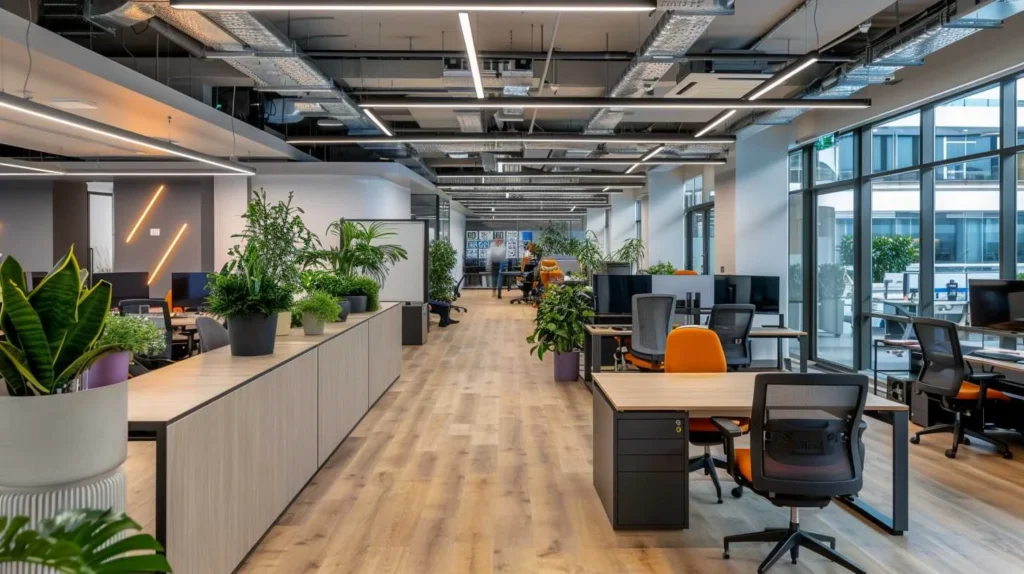
Las ventajas de las luces lineales LED controladas por DALI en las oficinas
Una iluminación más inteligente significa un uso de energía más inteligente
En los grandes edificios de oficinas, la iluminación puede representar una parte significativa del consumo de energía. Una de las ventajas clave de las luces lineales LED controladas por DALI es su capacidad para reducir drásticamente el desperdicio de energía a través de un control flexible y inteligente.
Con DALI, los gerentes de instalaciones pueden operar la iluminación tanto en macros como en micro, apagando todo un piso durante las horas de trabajo o atenuando una sola fila de accesorios lineales sobre los escritorios vacíos.
Este control a nivel de zona es especialmente valioso en oficinas de planta abierta, donde las necesidades de iluminación a menudo varían en diferentes áreas. Combinados con la eficiencia inherente de las luces lineales LED, los sistemas DALI ayudan a las organizaciones a cumplir los objetivos de sostenibilidad y reducir los costos operativos.
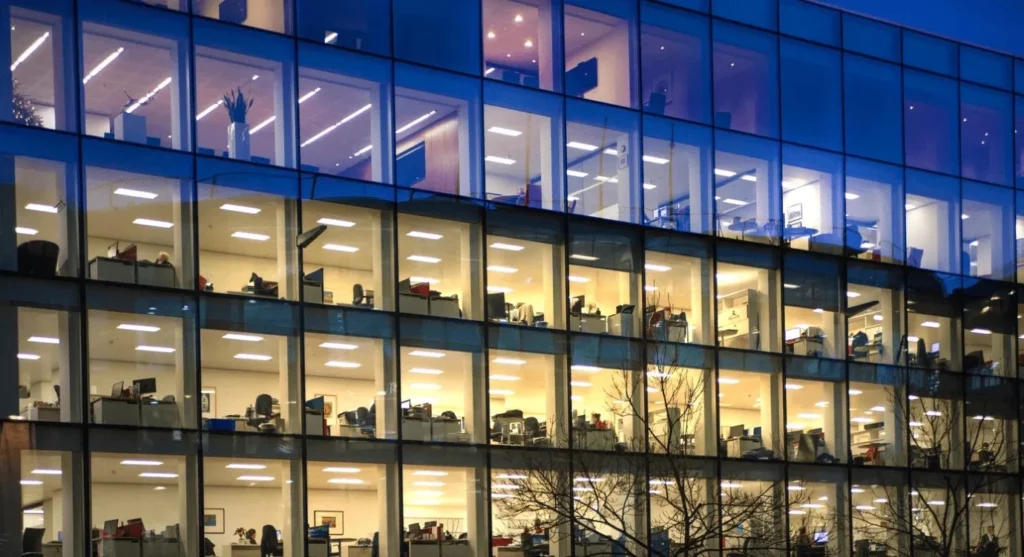
Control de atenuación y color de precisión
A diferencia de los sistemas tradicionales, DALI ofrece una atenuación suave y sin parpadeo con alta precisión. Incluso cuando se agrupan varias luces lineales, su brillo se puede ajustar sin problemas, manteniendo la uniformidad en todo el espacio.
Además, con DALI DT8, los usuarios pueden ajustar la temperatura del color para que coincida con diferentes horas del día o tareas, creando un entorno de iluminación centrado en el ser humano que apoye un mejor enfoque, comodidad y bienestar.
Control de escenas para diferentes actividades de oficina
No hay dos tareas de oficina iguales, y la iluminación debería adaptarse en consecuencia.
Los sistemas DALI permiten una programación de escenas sencilla, donde se pueden activar diferentes presets de iluminación con solo pulsar un botón o automatizar a través de un horario.
Por ejemplo, un "modo de reunión" podría activar una luz más brillante y fresca para estar alerta, mientras que un "modo de enfoque" durante las horas de trabajo individual podría disminuir ligeramente las luces para una atmósfera más tranquila. Un “modo de ahorro de energía” puede reducir automáticamente la iluminación durante los horarios de menor actividad. Este tipo de iluminación dinámica no solo ahorra energía, sino que también mejora la experiencia en el lugar de trabajo.
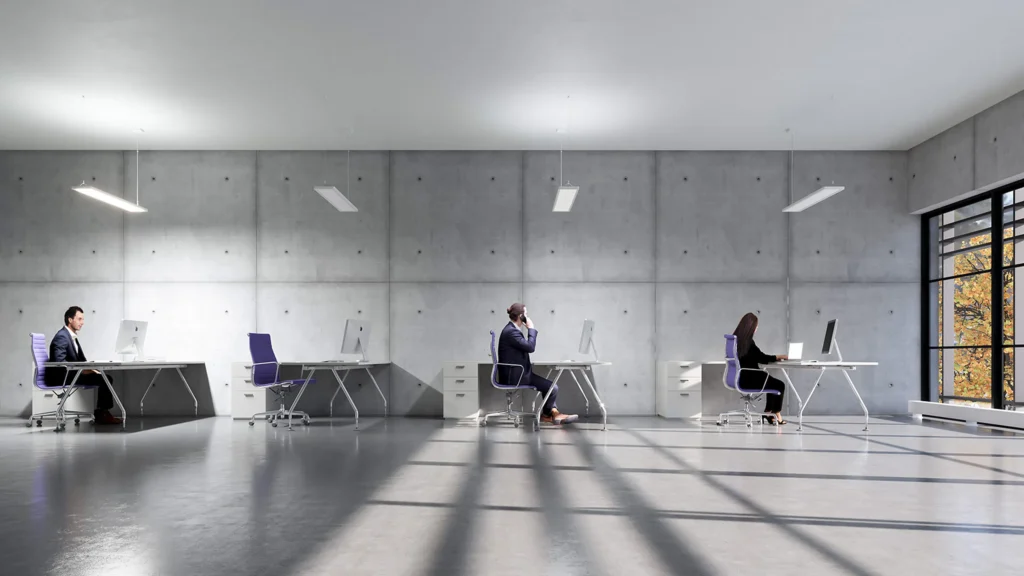
Integración con sensores para la automatización
DALI está diseñado para funcionar a la perfección con sensores de movimiento, sensores de luz natural y detectores de presencia.
En pasillos o baños, por ejemplo, los sensores de infrarrojos o de microondas pueden activar luces solo cuando se detecta movimiento, lo que reduce el uso innecesario mientras se mantiene la seguridad.
En salas de reuniones u oficinas privadas, los sensores de luz ambiental pueden ajustar los niveles de iluminación en función de la luz natural disponible, lo que ayuda a mantener el brillo óptimo sin sobreiluminación.
Monitoreo remoto y mantenimiento más sencillo
Otro beneficio importante de DALI es su apoyo al monitoreo centralizado del sistema. Los equipos de las instalaciones pueden verificar de forma remota el estado de cada dispositivo en la red, detectar fallas en tiempo real y planificar el mantenimiento sin inspección manual.
Algunos sistemas avanzados pueden incluso enviar alertas de fallas automatizadas, permitiendo que los equipos respondan de forma proactiva antes de que los usuarios noten un problema. Esto mejora la eficiencia operativa y reduce el tiempo de inactividad, particularmente en grandes propiedades comerciales con miles de puntos de iluminación.
Construido para la escalabilidad y el futuro
Los sistemas DALI son modulares y expandibles, lo que los convierte en una solución a prueba de futuro para entornos de oficina en crecimiento. Ya sea que esté ampliando un espacio de trabajo, reconfigurando zonas o integrándolo con un sistema de gestión de edificios (BMS), DALI brinda la flexibilidad de escalar sin volver a cablear o reemplazar los accesorios.
Además, su interoperabilidad entre marcas significa que no está encerrado en un solo fabricante, lo que ofrece más opciones y un mejor control de costos a largo plazo.
Cómo diseñar e implementar una iluminación lineal compatible con DALI en una oficina
Diseñar un sistema de iluminación de oficina con accesorios lineales compatibles con DALI no se trata solo de elegir los productos correctos, sino de comprender cómo funcionan juntos como un sistema. Una configuración bien planificada equilibra la estética, la comodidad del usuario, los objetivos energéticos y la flexibilidad a largo plazo.
Comience con las necesidades del proyecto, no solo con las especificaciones del producto
Cada proyecto de oficina es diferente. Algunos involucran espacios de trabajo abiertos con necesidades de iluminación uniformes; otros requieren un control en capas para salas de conferencias, pasillos y zonas de ruptura. En lugar de comenzar con los modelos de accesorios, comience por mapear las zonas, las funciones del usuario y los requisitos de control.
Haga preguntas como:
¿Qué áreas necesitan blanco sintonizable?
¿Algunas habitaciones requieren un control basado en el movimiento?
¿Necesitarán los usuarios paneles de pared o control de aplicaciones?
Estas respuestas determinan qué tipo de controladores DALI, paneles de control y sensores requerirá el sistema.
Asegúrese de que todos los componentes hablen el mismo idioma
Para una instalación sin problemas, asegúrese de que todos los componentes del sistema (controladores, sensores, interruptores y concentradores de control) cumplan con la normativa DALI o DALI-2.
No es raro que los proyectos tengan problemas porque un componente solo imita el comportamiento de DALI sin estar completamente certificado. Apéguese a los fabricantes de confianza, y si el proyecto incluye sistemas de terceros como la integración de BMS o HVAC, compruebe la compatibilidad desde el principio.
Cableado e instalación: manténgalo simple, pero preciso
Los sistemas DALI funcionan en un bus sin polaridad de dos hilos, lo que simplifica el cableado en comparación con otros protocolos. Sin embargo, la planificación de la disposición sigue siendo importante.
Para oficinas más grandes, considere usar varias líneas DALI (cada una de las cuales admite hasta 64 dispositivos) para organizar el control por piso o departamento. Mantenga el cableado del bus DALI separado de la red eléctrica y evite los largos cables que puedan introducir ruido de señal.
En casos de reacondicionamiento, las luces lineales suspendidas o montadas en la superficie pueden minimizar el trabajo del techo, mientras que las opciones empotradas son más adecuadas para las nuevas construcciones.
Planificar los puntos de control y la interacción del usuario
No dejes la interfaz de usuario como una ocurrencia tardía. En un sistema de iluminación inteligente, la forma en que los usuarios interactúan con la iluminación importa tanto como las propias luces.
Instale interruptores de escena o paneles táctiles en ubicaciones clave, como cerca de salas de reuniones, entradas o áreas de trabajo abiertas. Para proyectos con reconfiguración frecuente, considere el control basado en software a través de una aplicación o una interfaz de escritorio, que se puede actualizar sin volver a cablear físico.
Deja espacio para la expansión
Incluso si el alcance actual es limitado, planifique el sistema con futuras actualizaciones en mente.
Deje direcciones DALI de repuesto en cada línea y use accesorios de iluminación lineales modulares que puedan ser encadenados o extendidos. Si las necesidades de los inquilinos evolucionan, más estaciones de trabajo, diferentes diseños de escritorio, nuevas divisiones, el sistema de iluminación debería adaptarse sin derribar el techo.

¿Por qué elegir SignLiteled como su socio de iluminación lineal DALI?
Cuando se trata de implementar iluminación lineal compatible con DALI en entornos de oficina modernos, la experiencia, la flexibilidad y la fuerza de la ingeniería son importantes. He aquí por qué muchos clientes B2B en Europa y América del Norte eligen SignLiteled como su socio de iluminación:
1. Diseño y moldeado interno de perfiles de aluminio
Diseñamos y producimos nuestros propios perfiles de aluminio, permitiendo un control total sobre las dimensiones del producto, acabados y rendimiento térmico. Ya sea que el proyecto requiera perfiles antirreflejos profundos, adornos ultrafinos o canales de luz continuo, podemos ofrecer soluciones estructurales que coincidan con las necesidades tanto funcionales como estéticas.
Esta capacidad interna también significa mejores plazos de entrega y coherencia en los lotes de producción.
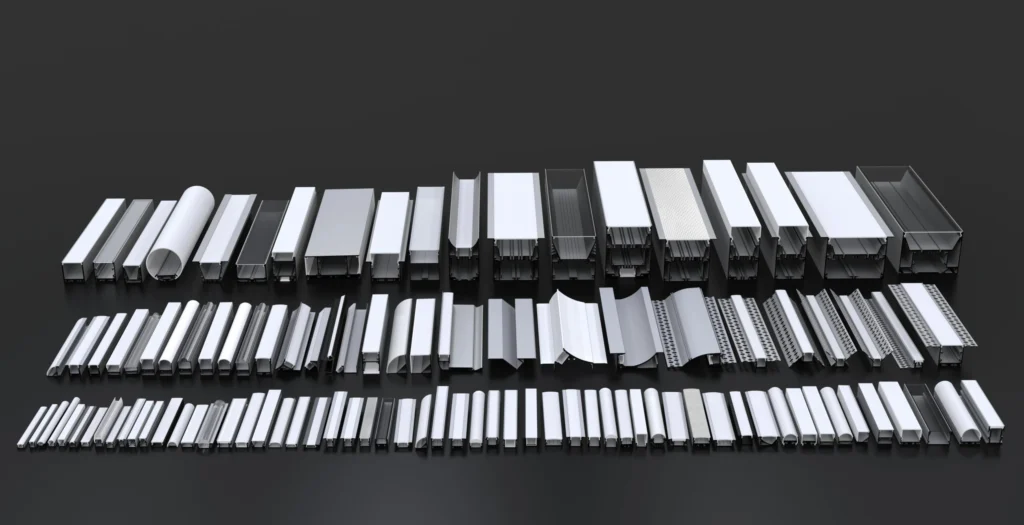
2. Fuerte capacidad en proyectos no estándar personalizados
La mayoría de los proyectos de iluminación de oficinas profesionales requieren más que productos disponibles. En SignLiteled, admitimos la personalización en múltiples niveles: longitud, acabado, óptica, potencia, ángulo de haz e interfaces de control.
Para los sistemas DALI en particular, ayudamos a integrar los controladores, los sensores y la lógica de atenuación directamente en la estructura de iluminación, reduciendo la necesidad de un montaje complejo en el sitio.
Si hay un concepto de iluminación o dibujo, podemos convertirlo en una solución manufacturable.
3. Récord probada en proyectos de la UE y de América del Norte
Nuestros productos se han utilizado en una amplia gama de proyectos de oficina, educación y atención médica en Alemania, los Países Bajos, los EE. UU. y Canadá. Entendemos los requisitos de cumplimiento regional (por ejemplo, CE, RoHS, UL, DLC) y podemos adaptar las especificaciones del producto en consecuencia.
Por ejemplo, hemos suministrado sistemas DALI Linear para torres de oficinas de nueva construcción, adaptado los espacios de planta abierta existentes y ayudado a diseñar soluciones de bordes para sistemas de techo acústico.
4. Servicio integral desde la especificación hasta el envío
Asistimos a los clientes a través del ciclo completo de adquisiciones, desde la selección y muestreo de modelos tempranos hasta la producción en masa y el apoyo de envío internacional.
Ya sea que necesite 5 muestras o 5000 accesorios, nuestro equipo puede manejar cotizaciones, prototipos y logística dentro de plazos ajustados.
Y cuando comparte un diseño de iluminación o una hoja de especificaciones, podemos proporcionar recomendaciones rápidas y realistas para la configuración de energía, selección de controladores y agrupación de direcciones DALI.
La iluminación DALI confiable comienza con el socio adecuado
A medida que los sistemas de iluminación DALI se vuelven cada vez más estándar en los proyectos de oficina modernos, la elección de un proveedor con las capacidades adecuadas es más importante que nunca. En SignLiteled, no solo entendemos los requisitos técnicos de la iluminación DALI, ayudamos a facilitar la implementación.
Trabajamos con marcas de controladores DALI conocidas como Tridonic, EUCHIPS, Sunricher y LIFUD, lo que garantiza la compatibilidad y la fiabilidad a largo plazo de su sistema de iluminación. Desde el diseño de perfiles hasta la integración del controlador, desde la creación de prototipos hasta la entrega, brindamos soporte confiable en cada etapa.
Si está buscando un socio de iluminación lineal DALI que pueda brindar flexibilidad y conocimientos de proyecto, póngase en contacto con signliteleted hoy.
Hagamos que su próximo proyecto de iluminación de oficina cobre vida, con confianza.
Contáctenos en sales@signlite.com.cn O visite www.signliteled.com para comenzar.

